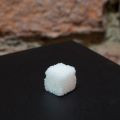The Cave & The Garden
Futura - Center for Contemporary Art, Holečkova 49, Praha 5
August 11, 2020 - September 27, 2020
|
The Cave & The GardenFutura - Center for Contemporary Art, Holečkova 49, Praha 5August 11, 2020 - September 27, 2020
Artists: Gailė Cijūnaitytė, Tomas Daukša, Uli Golub, Laura Kaminskaitė, Donna Kukama, Jumana Manna, Katrīna Neiburga, Jaakko Pallasvuo, Artūras Raila, Darius Žiūra, Artur Żmijewski. Curator: Valentinas Klimašauskas The exhibition title refers to two well-known allegories that interpret the world - Plato’s Cave and Voltaire’s Garden. According to Plato, the shadows frame reality for the prisoners within the cave as they are allowed to experience existence solely through their observation. According to such logic, the fire, or human-made light, such as a film projection, TV, or VR - to use contemporary examples - is set ablaze by artists, in order to illuminate, teach or critique the dominant doctrines of time and place. The fire or light may be further interpreted as the political doctrine - Plato named nation-state as one of its sources and nowadays we surely could add many more lighthouses of propaganda. In “Candide: or, The Optimist” (1759), Voltaire famously concludes by advocating a practical precept - “one must cultivate one’s own garden”. When Voltaire was writing “Candide”, similarly to the present day, the world did not appear a harmonious place - the satire refers to historical events such as the Seven Years’ War, the 1755 Lisbon earthquake, and also ridicules colonialism, positivism, theology, governments, you name it. “Cultivation of one’s garden” may relate to cultivating life, profession, or global eco-socio-political system. However, the idea reveals a paradox - in nurturing these "gardens", one changes the nature of the world which determines them. What then constitutes the differences and similarities between the analogies of the world as a cave and a garden? For an individual in the cave, the act of seeing and understanding may be interpreted as a rather passive and solipsistic act, while gardening is seen as a more active and, possibly world-changing practice. To act constructively, however, one has to have clear perception and understanding of reality, and they both share this dilemma. The group exhibition contains mostly works by artists from Central and Eastern Europe that were created during the last two decades. They reveal the multifaceted and problematic nature of our societies and the world, having in mind the current conditions of quarantine and COVID-19 wave(s), the activation of nationalist inclination and border-building, social unrest, rising commotion in response to the racist and colonialist past and present, the sixth extinction, and others. In this context, both the artists and spectators drift between the two allegories: as cave prisoners who need to differentiate between projections and ideologies; and as gardeners who cultivate certain ideas and practices in various artistic formats, poetic gestures, research, or socio-political manifestations that may produce an impact on the so-called nature and vice versa. Supported by Lithuanian Council for Culture Futura - Center for Contemporary Art
|


